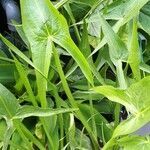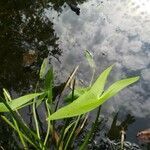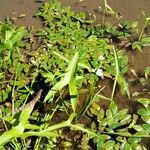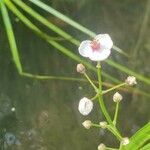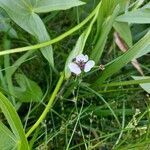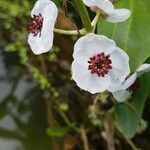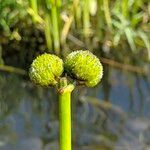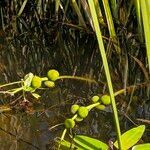This perennial herb has arrow shaped leaves. It grows 50-80 cm high. Leaves are arrowhead-shaped and 5-20 cm wide. They are raised above the water level. The flowers are in rings around the stem and are white with a yellow centre. The flower stalk is long. The plant produces edible tubers. These underground corms are spherical, yellowish or brownish, with membranous scales on two or three rings. There are usually 4-6 tubers on each plant. They are 5 cm across.
